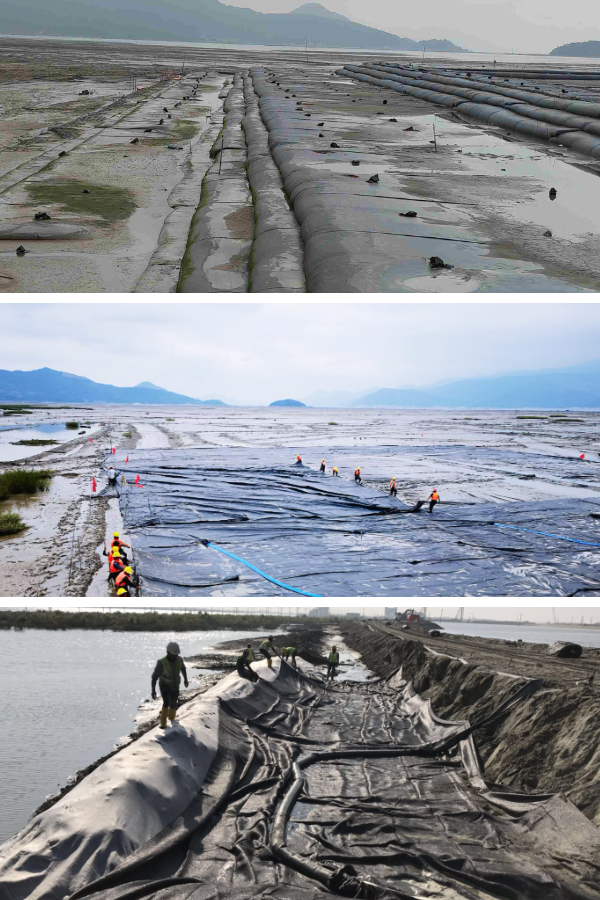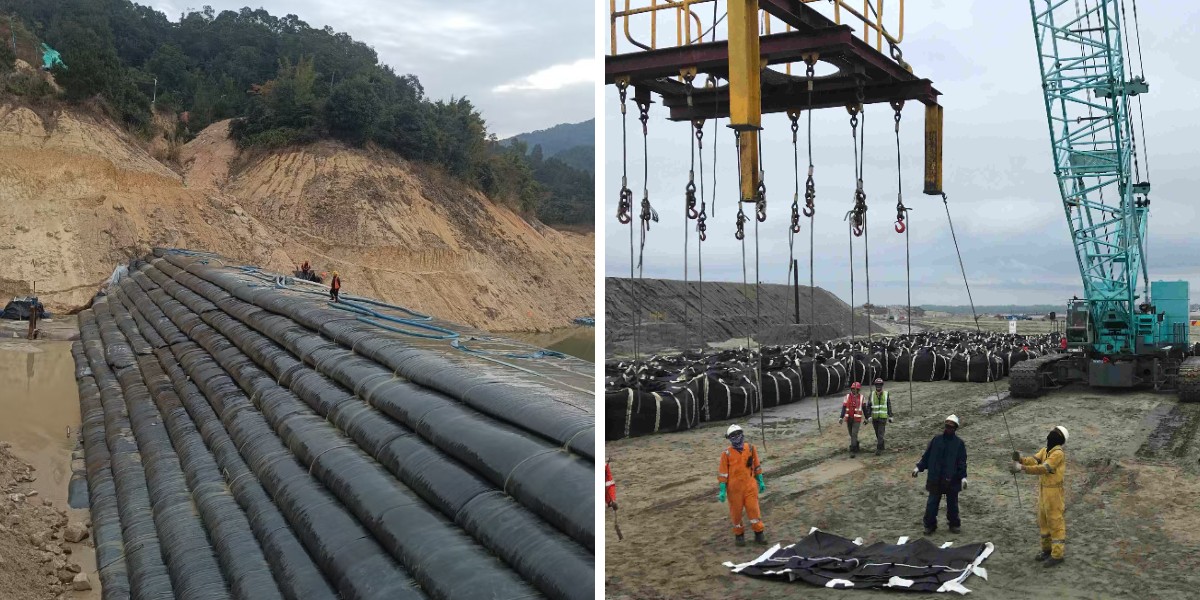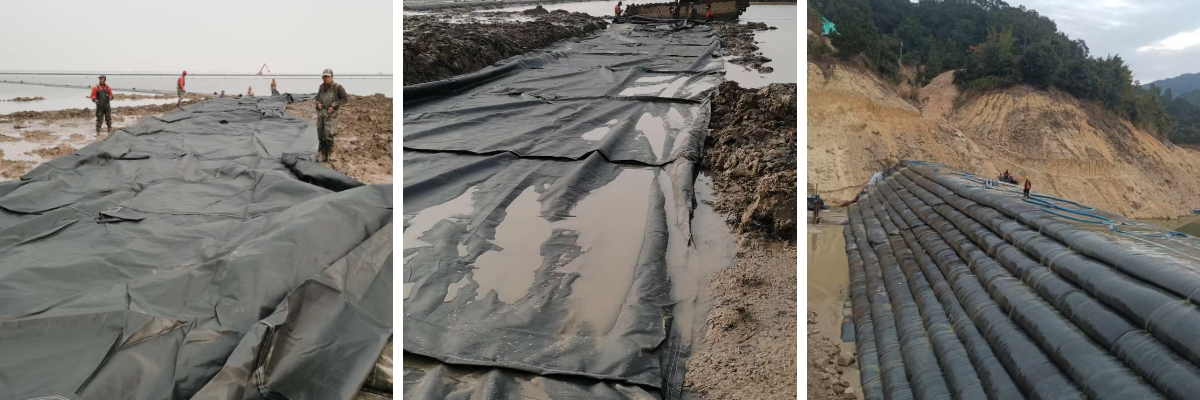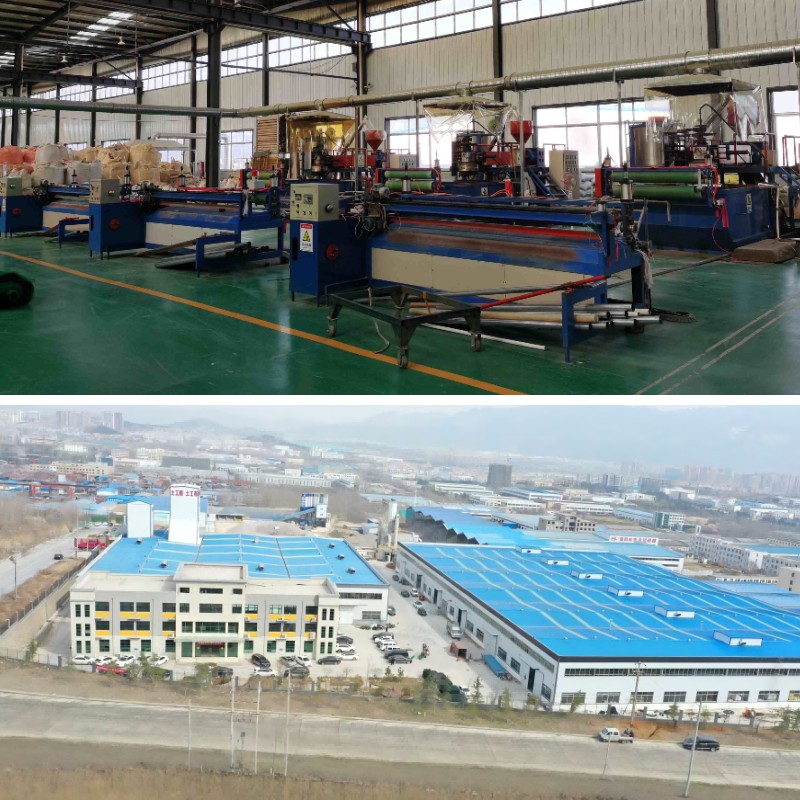What Happens to the Sludge After Geotube Dewatering? Disposal and Reuse Options.
Introduction: The Journey of Sludge Doesn't End with Dewatering
In the geographical regions of environmental remediation, wastewater treatment, and dredging, geosynthetic tubes have turn out to be a cornerstone science for environment friendly dewatering. Often referred to as Geotubes, dewatering bags, or especially as Dredging and Dewatering Bags, these containers excel at keeping apart water from stable waste, considerably decreasing sludge volume. But a quintessential query regularly arises for venture managers and environmentalists alike: What takes place to the dried sludge as soon as the dewatering procedure interior these geosynthetic tubes is complete? The experience of the sludge is a ways from over. Its ultimate vacation spot is a rely of regulatory compliance, environmental responsibility, and often, financial opportunity. This article delves deep into the destiny of this residual material, exploring the a number disposal and really helpful reuse choices that radically change a waste product into a possible resource. From landfill cowl to agricultural applications, we will discover the lifecycle of sludge after it has been processed the usage of these versatile containers, consisting of their specialised software as a Flood Control Geotube.
The system starts offevolved when slurry—a combination of water and exceptional solids—is pumped into high-strength geotextile containers. The material retains the strong particles whilst permitting water to drain, ensuing in a huge quantity reduction. This technological know-how is now not solely indispensable for managing contaminated sediments however additionally performs a crucial position in tasks the place a Flood Control Geotube is used to create transient barriers, with the dewatering characteristic being a secondary or simultaneous benefit. Understanding the post-dewatering section is vital for a holistic and sustainable method to modern-day waste management, making sure that the complete process, from preliminary containment to closing placement, is each environment friendly and environmentally sound.
The Geotube Dewatering Process: A Brief Recap
Before we can discover the aftermath, it is indispensable to recognize the preliminary manner that transforms liquid sludge into a handleable solid. The dewatering operation the usage of geosynthetic tubes is a surprise of simple, positive engineering. It includes pumping sludge, which can originate from industrial lagoons, water remedy plants, or dredging activities, into massive containers made of permeable geotextile fabrics. These fabric are engineered with particular pore sizes that enable water to get away whilst trapping the stable particles within.
The effectivity of this machine is what makes it so popular. As water filters thru the textile, the stable content material inner the geosynthetic tubes increases, leading to consolidation. Often, flocculants are introduced to the sludge circulation to motivate satisfactory particles to clump together, improving the dewatering charge and readability of the effluent. Over time, which can vary from weeks to months relying on the fabric and climate, the sludge transforms from a pumpable liquid to a soil-like strong with a regular solids content material of 50% or higher. This big discount in quantity is the major monetary driver, as it considerably cuts transportation and disposal costs. It's a technique equally nice in large-scale environmental dredging tasks the usage of big Dredging and Dewatering Bags and in greater focused functions like dewatering in the back of a Flood Control Geotube structure. This preliminary section units the stage for the subsequent choices involving the destiny of the dewatered cake.
Common Disposal Pathways for Dewatered Sludge
Once the dewatering technique inside the geosynthetic tubes is entire and the solids have sufficiently cured, the containers are usually slit open. The ensuing material, frequently referred to as "cake," should then be managed. The chosen disposal direction is closely influenced via the chemical and bodily traits of the sludge, neighborhood regulations, and task budget.
Landfilling
Landfilling stays one of the most frequent disposal techniques for dewatered sludge, mainly when the cloth is contaminated with heavy metals, chronic natural pollutants, or different hazardous resources that ward off reuse.
Hazardous Waste Landfills: If the sludge fails toxicity attribute leaching process (TCLP) assessments or is in any other case labeled as hazardous, it have to be disposed of in a especially designed hazardous waste landfill. These amenities have stringent liner systems, leachate collection, and monitoring necessities to defend groundwater.
Non-Hazardous Waste Landfills: For many municipal and industrial sludges that are deemed non-hazardous, disposal in a sanitary landfill is a general option. The quantity discount carried out through dewatering in geosynthetic tubes is a key advantage here, as it conserves treasured landfill airspace. In some cases, this dewatered fabric can even be used as a every day cowl cloth for the landfill, decreasing the want to import soil. This is a frequent end-use for sludge from Dredging and Dewatering Bags used in pond and lagoon cleanouts.
Monofilling
Monofilling is a specialised disposal approach the place the dewatered sludge is positioned in a dedicated, engineered phone designed totally for that unique kind of waste. This is regularly employed for large-scale projects, such as the remediation of a precise industrial site, the place the waste flow is steady and voluminous. The sludge, having been dewatered and stabilized inside the geosynthetic tubes, is transported and compacted in the monofill. This technique presents a controlled, long-term containment solution, specifically for wastes that are now not hazardous however are now not appropriate for advisable reuse. The use of geosynthetic tubes in the preliminary dewatering section ensures the cloth is in an most advantageous country for placement and compaction inside the monofill cell.
Beneficial Reuse: Transforming Waste into Resource
A developing fashion in sustainable waste administration is the advisable reuse of dewatered sludge. When the fabric is non-hazardous and possesses sure advisable properties, it can be diverted from landfills and used in a number of applications, turning an environmental legal responsibility into a treasured resource.
Agricultural and Land Application
One of the oldest varieties of sludge reuse is land application. Dewatered biosolids from municipal wastewater cure flowers are wealthy in natural rely and vitamins like nitrogen and phosphorus, making them an splendid soil conditioner and fertilizer.
Class A and Class B Biosolids: Treated and examined to meet strict EPA standards, these biosolids can be utilized to agricultural land, forests, or devoted reclamation sites. The dewatering procedure in geosynthetic tubes is a essential step in reaching the required solids content material and pathogen discount for Class B, and can be section of a procedure teach to produce Class A "Exceptional Quality" biosolids.
Soil Amendment: The natural remember in the sludge improves soil structure, water retention, and fertility. Farmers regularly welcome this competitively priced choice to chemical fertilizers. The fabric that as soon as crammed Dredging and Dewatering Bags from a water remedy facility can give up up enriching farmland, closing a nutrient loop in a community.
Construction and Landscaping Materials
Dewatered sludge can be integrated into development materials, supplying each a disposal answer and a uncooked material.
Landfill Daily Cover: As cited earlier, non-hazardous dewatered sludge can regularly be used as an choice every day cowl (ADC) at landfills, pleasant a regulatory requirement whilst disposing of the material.
Brick Manufacturing and Cement Production: Some kinds of mineral-based sludge can be used as a aspect in brick manufacturing or as a uncooked feed in cement kilns. The excessive temperatures worried can ruin natural contaminants and contain the mineral fraction into the last product.
Landscape Fill and Embankments: For clean, mineral-rich sediments, such as these from dredging uncontaminated waterways, the dewatered cake can be used as commonplace fill fabric for landscaping, street sub-bases, or embankment construction. In this context, the geosynthetic tubes used for dewatering serve as the preliminary processing step that creates a usable engineering material. Even the containers from a Flood Control Geotube project, if crammed with appropriate sediment, can be repurposed in location as section of a everlasting earthwork structure.
Energy Recovery
Sludge with a excessive organic content material possesses calorific fee and can be used as a supply of energy.
Incineration with Energy Recovery: Dewatered sludge can be incinerated in devoted waste-to-energy plants. The warmth generated from combustion is used to produce steam, which can power mills to generate electricity. The extent discount from dewatering in geosynthetic tubes is quintessential here, as it reduces the auxiliary gas required for combustion and makes the technique extra energy-efficient.
Co-firing: In some cases, dried sludge can be co-fired with coal in energy stations, offsetting the use of fossil fuels.
Key Factors Influencing Disposal and Reuse Decisions
The course taken for the dewatered sludge from geosynthetic tubes is now not arbitrary. It is dictated by way of a cautious assessment of countless vital factors.
Regulatory Compliance: This is the fundamental concern. Local, state, and federal environmental policies strictly govern the classification, handling, transportation, and remaining vacation spot of sludge. The toxicity characteristics, pathogen levels, and vector appeal discount need to all be assessed.
Chemical Composition: The presence and attention of contaminants like heavy metals, PCBs, pesticides, or salts decide whether or not the fabric is hazardous and what reuse options, if any, are viable. Extensive laboratory checking out is carried out on the sludge each earlier than and after dewatering in the geosynthetic tubes.
Physical Properties: The grain dimension distribution, permeability, and shear energy of the dewatered cake have an impact on its conduct as an engineering material. This influences its suitability for makes use of like development fill or each day cover.
Economic Considerations: The prices of transportation, tipping charges at landfills, and conceivable income from reuse picks are all weighed. The extent discount executed through the usage of Dredging and Dewatering Bags frequently makes really helpful reuse economically viable by way of reducing transport costs.
Project Location and Logistics: The proximity of the dewatering web page to landfills, agricultural land, or development tasks can be a determining factor. For far flung projects, on-site reuse or monofilling may be the solely sensible options. A Flood Control Geotube used in a faraway area, for instance, may be dewatered and then left in vicinity as a stabilized berm, furnished it meets environmental standards.
The Future of Sludge Management: Trends and Innovations
The administration of sludge post-geotube dewatering is evolving in the direction of higher sustainability and useful resource recovery. The thinking of a "circular economy" is gaining traction, the place waste is seen as a aid to be cycled returned into the economy.
Advanced Thermal Conversion: Technologies like pyrolysis and gasification are being developed to convert sludge into bio-oil, syngas, and biochar extra efficaciously than usual incineration, with decrease emissions.
Enhanced Nutrient Recovery: New approaches are focusing on extracting high-purity phosphorus and nitrogen from sludge, which are treasured and finite assets indispensable for fertilizer production.
Phytocapping and Bioremediation: In some monofilling scenarios, the closed cells are capped with unique flora that assist manipulate leachate and steadily destroy down contaminants thru herbal organic processes. The steady platform created by way of dewatered geosynthetic tubes can facilitate this variety of revolutionary capping system.
Standardization of Reuse Products: There is a developing push to create standardized, licensed merchandise from handled sludge, such as soil blends or building aggregates, to construct market self assurance and demand.
The humble geosynthetic tube, whether or not referred to as a Geotube, Dredging and Dewatering Bag, or Flood Control Geotube, is the first fundamental step in this contemporary waste administration hierarchy. By reworking liquid sludge into a solid, it unlocks a suite of possibilities, transferring us away from easy disposal and in the direction of a future the place waste is genuinely a aid out of place.
Conclusion: From Disposal Dilemma to Resource Opportunity
The query of what takes place to sludge after geotube dewatering is central to the environmental and financial success of any dewatering project. The technology of viewing this fabric in simple terms as a waste product destined for the landfill is hastily closing. While impenetrable disposal stays a indispensable choice for contaminated materials, the focal point is more and more moving closer to really helpful reuse. Through agricultural application, use in construction, and strength recovery, the stable residue from geosynthetic tubes is being redefined as a possible asset.
The complete process, initiated by means of the environment friendly dewatering motion of geosynthetic containers like Dredging and Dewatering Bags, demonstrates a state-of-the-art method to modern-day environmental challenges. Even specialised applications, such as a Flood Control Geotube, are designed with the cease aim in mind, making sure that the dewatered fabric can be managed responsibly. By cautiously characterizing the sludge, adhering to regulations, and embracing progressive technologies, mission managers can make knowledgeable selections that limit environmental impact, minimize costs, and make a contribution to a extra sustainable, round economy. The trip of the sludge, therefore, is a testomony to how engineering and environmental science can collaborate to flip a hassle into a solution.
Contact Us
Company Name: Shandong Chuangwei New Materials Co., LTD
Contact Person :Jaden Sylvan
Contact Number :+86 19305485668
WhatsApp:+86 19305485668
Enterprise Email: cggeosynthetics@gmail.com
Enterprise Address: Entrepreneurship Park, Dayue District, Tai 'an City,
Shandong Province










